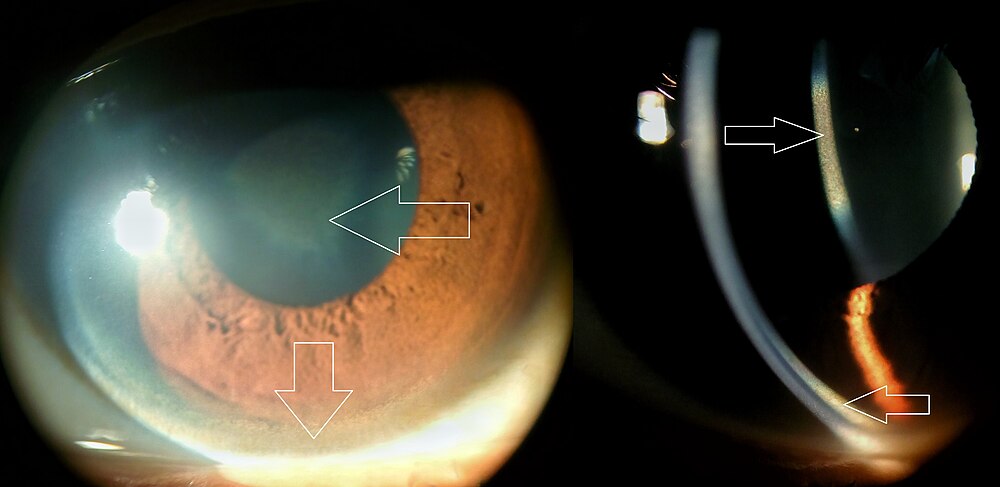Kayser–Fleischer ring
| Kayser–Fleischer ring | |
|---|---|
 | |
| A Kayser–Fleischer ring in a 32-year-old patient who had longstanding speech difficulties and tremor. | |
| Specialty | Ophthalmology |
Kayser–Fleischer rings (KF rings) are dark rings that appear to encircle the
ophthalmologists Bernhard Kayser and Bruno Fleischer who first described them in 1902 and 1903.[2][3][4] Initially thought to be due to the accumulation of silver, they were first demonstrated to contain copper in 1934.[5]
Presentation

The rings, which consist of copper deposits where the cornea meets the sclera, in Descemet's membrane, first appear as a crescent at the top of the cornea. Eventually, a second crescent forms below, at the "six o'clock position", and ultimately completely encircles the cornea.[1][6]
Associations
Kayser–Fleischer rings are a sign of
muscle rigidity, psychiatric disturbances, dystonia and dysphagia. The combination of neurological symptoms, a low blood ceruloplasmin level and KF rings is diagnostic of Wilson's disease.[1]
Other causes of KF rings are
primary biliary cirrhosis and "cryptogenic" cirrhosis (cirrhosis in which no cause can be identified).[1]
Diagnosis

As Kayser–Fleischer rings do not cause any symptoms, it is common for them to be identified during investigations for other medical conditions. In certain situations, they are actively sought; in that case, the early stages may be detected by slit lamp examination before they become visible to the naked eye.[1]
See also
- Fleischer ring
- Hudson-Stahli line
- Limbal ring
References
- ^ PMID 10435182.
- ^ Kayser B (1902). "Über einen Fall von angeborener grünlicher Verfärbung des Cornea". Klin Monatsbl Augenheilk. 40 (2): 22–25.
- ^ Fleischer B (1903). "Zwei weitere Fälle von grünlicher Verfärbung der Kornea". Klin Monatsbl Augenheilk. 41 (1): 489–491.
- Who Named It?
- .
- ^ "Kayser-Fleischer rings". GPnotebook.

